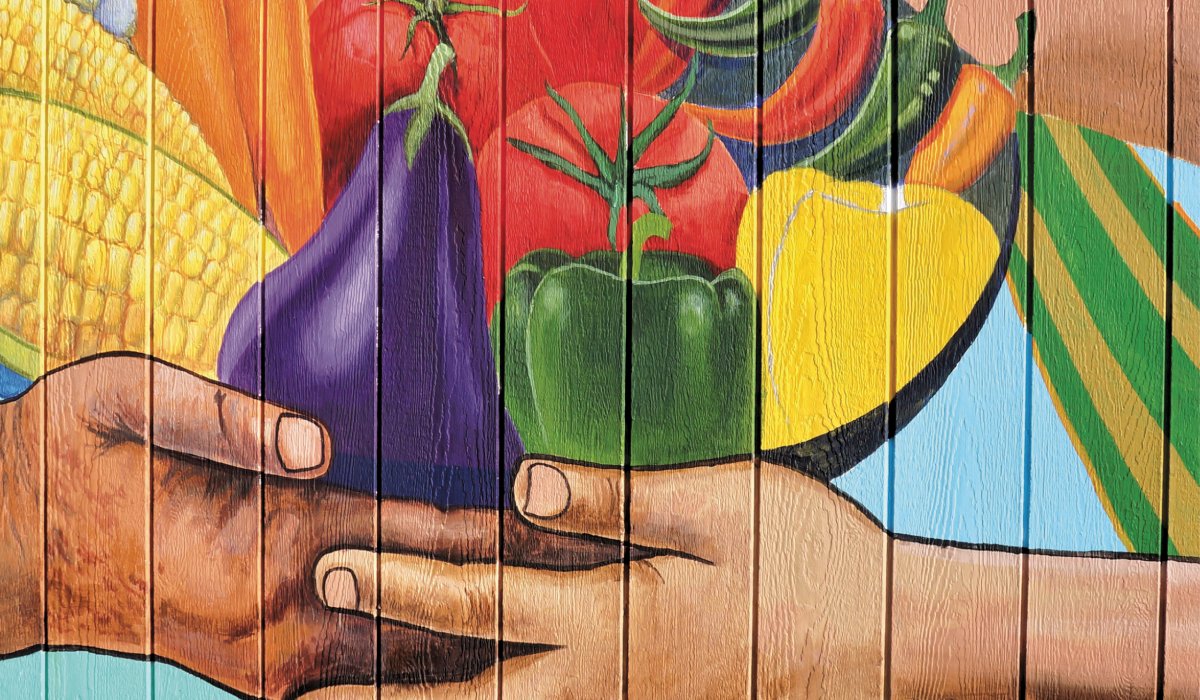
With white-trimmed double doors and four olive green walls of all-weather wood paneling, one adorned with watering cans and corn husks, the Painted Turtle Farm shed stands along the fence line of a three-quarter-acre community garden between the West Building and the College’s Observatory. Since 2013, the farm has served an important role for nearly 30 families to address food justice.
It was clean and organized, but a common commodity for such an uncommon space.
Through a public mural project sponsored by Project Gettysburg-León (PGL), it has since been transformed. It is now a vibrant representation of the history, culture, and community of the growing immigrant population who have found a new home in Adams County, Pennsylvania, and use the Painted Turtle Farm to continue their agricultural traditions.
An idea that inspired involvement
In the 1980s, Gettysburg College began sponsoring educational trips to Nicaragua during the Sandinista-Contra conflict to better understand the challenges the nation faced. The resulting drive to provide assistance to neighborhoods in and around León, Nicaragua, brought PGL into existence in 1987.
Today, the sister-city partnership facilitates the mutual exchange of intercultural learning through the support of a number of organizations in the Gettysburg community, including the College’s Center for Public Service (CPS).
However, after the COVID-19 pandemic halted travel, CPS Director Jeffrey Rioux had an idea. He wanted to maximize impact during the first Salsa on the Square in three years in September 2022—and a community art project was born.
PGL invited Nicaraguan artists Marlon Moreno and Allan Lindo Muñoz to Gettysburg for three weeks, meeting with families who have plots at the Painted Turtle Farm and students in Art and Art History Prof. Austin Stiegemeier’s class. Together, they used a community-based design process to bring the shed to life with murals that were meaningful to the community who use the space, including Antoni Esquivias ’25.
Esquivias, a public policy and sociology double major and Spanish minor, was only four years old when his family immigrated to Biglerville, Pennsylvania from a small town near the Jalisco capital of Guadalajara, Mexico. His first introduction to Gettysburg College was through the Painted Turtle Farm when his parents Maria Hernandez P’25 and Monico Esquivias P’25 began cultivating a plot there. CPS was a major influencing factor when Esquivias decided to attend Gettysburg College and has been a defining aspect of his co-curricular experience, too.
“I love giving back to my community, and CPS is perfect for that goal,” Antoni Esquivias said. “When we learned about the mural, we were really happy to hear how the community was going to be involved. It would allow us to show our community’s hard work.”
To better understand the connection with the people and the land that shape the community she lives in, Adriana Quiñonez Solano ’24, a triple major in environmental studies, public policy, and Latin American, Caribbean, and Latino studies with a Spanish concentration, began volunteering at the farm as a first-year student in 2020.
“Over the past seven months that I’ve worked at the farm, the families and I have created a special bond,” Quiñonez Solano said. “I have learned a lot about growing food, but most importantly the importance of community and being kind.”
Capturing transformative connections through hands-on experience in public art was central for Stiegemeier.
“Students were able to see this project from conceptualization through to design and execution,” Stiegemeier said. “The mural is an expression of the community, so we needed to meet the members of the community that this is supposed to represent.”

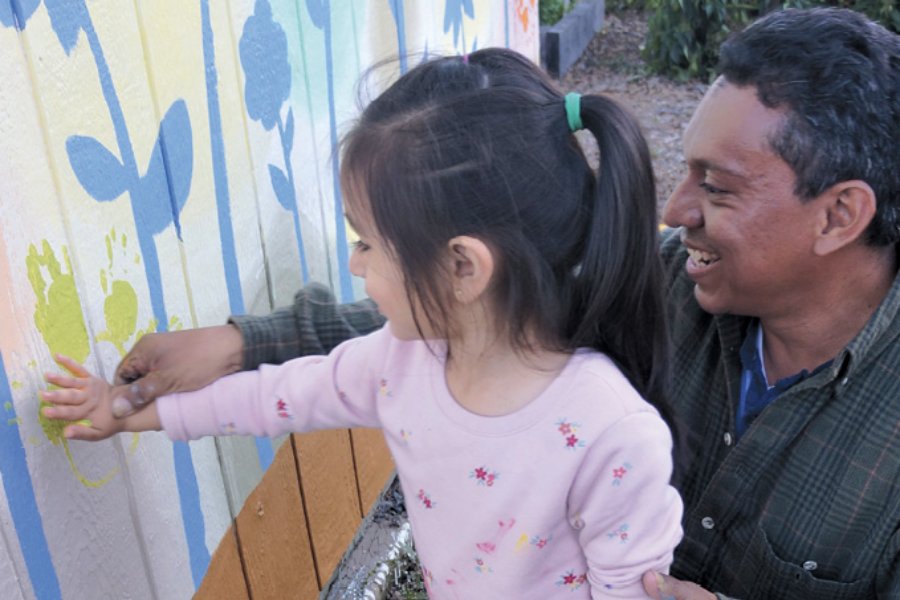
The stories behind each paint stroke
With papers, pencils, and markers at the ready, Moreno and Muñoz asked the families a simple question: What makes you happy when you come to the Painted Turtle Farm?
They spoke about the lives they left behind and the new ones they are building here.
They drew pictures of the vegetables they grow that make them feel connected to the food and the traditions of their home countries.
They shared the history and the culture they try to keep alive, as well as the history of the farm they lovingly refer to as “la tortuga,” which means turtle in Spanish.
They expressed their pride in working in the apple orchards dotting the landscape of Adams County—an important part of the economy for the county known as Apple Country, USA.
They were also united in their love of bold, bright colors and how it reminded them of their home—especially when surrounded by bleak Pennsylvania winters.
After reflecting on their responses, Moreno and Muñoz shared a preliminary mockup with the families and Stiegemeier’s Intermediate Painting class. Each wall had its own theme with distinct visuals: apple orchards, an exchange of fresh produce, the farm’s namesake turtle, and flowers made out of handprints.
Once each wall got its seal of approval, the artists—aided by Gettysburg art students and other members of the community—got to work priming, sketching, and painting.
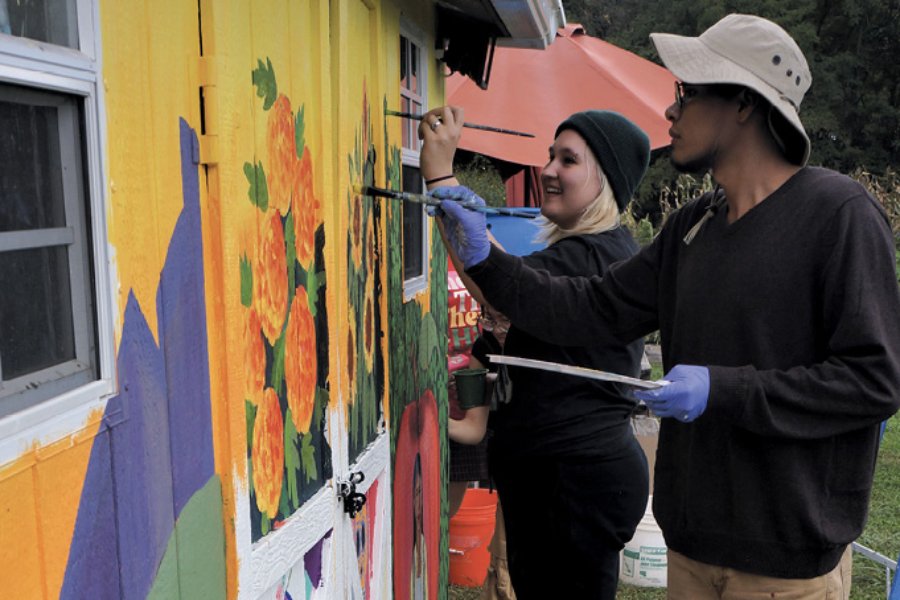
The shed doors are embellished with bright sunflowers and marigolds, symbolizing the rich history and natural beauty of Central America. Other nods to their history included Mayan pyramids, las calaveras associated with the Day of the Dead and their generations of ancestors and monarch butterflies that can be found in all seven countries of Central America and are also the adopted symbol of migration.
Closer to home, you can see the apples that Adams County is known for, as well as an outline of the Glatfelter Hall bell tower peeking out over verdant green fields being plowed by honorary degree recipient Karl Mattson, past PGL president, CPS founder, and longtime College chaplain.
The new design serves as a visual extension of the community that utilizes the space. Quiñonez Solano noted how it captures their values and its welcoming environment. For Stiegemeier, it facilitates a sense of place and importance. Each person who uses the farm has something unique they connect with, too.
“I love the design of the older hands giving the young hands the vegetables,” Hernandez said. “It represents the passage of not only food but also information.”
“We feel a lot of happiness because we can leave some of our memories and our reasons for loving the farm,” Monico Esquivias added. “This is a sort of legacy for our new generations, our kids, and the other kids at the farm.”
A community of learning and friendship
During their visit, it was just as important for Moreno and Muñoz to bring the community together as it was to educate its members about their homeland and the power of art.
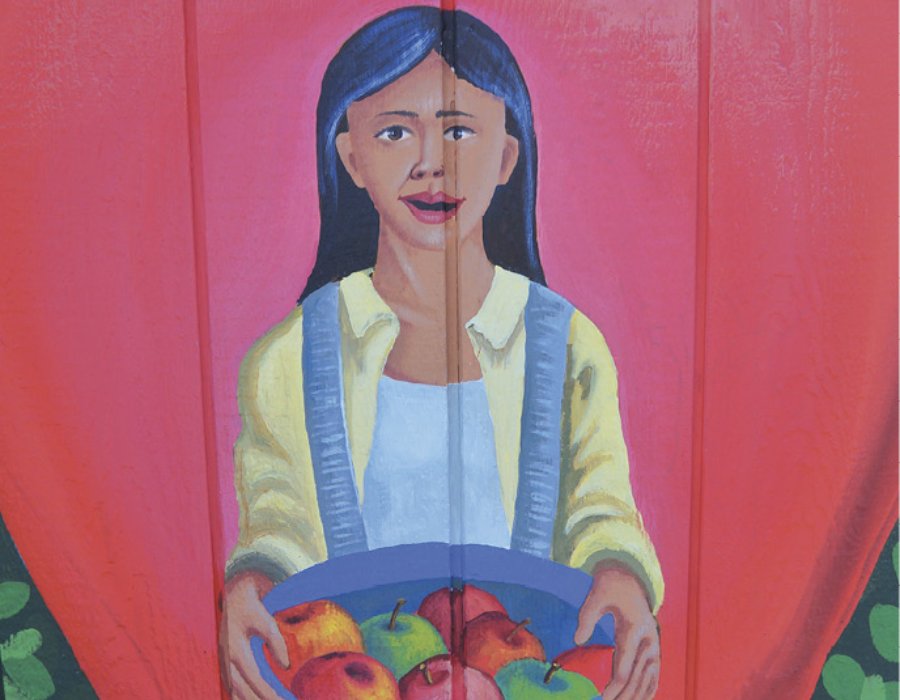
Together, through the experimentation of colors, they taught Stiegemeier’s students the primitivista painting style, which is unique to sweeping landscapes and diverse flora and fauna of Nicaragua. They also shared their murals that grace the streets of León, discussing how public art connects the past and present through shared space, as each mural depicts their communities, providing meaningful representation for those who live there. Moreno and Muñoz then guided members of the Gettysburg community in the creation of a famed sawdust carpet during Salsa on the Square.
“Salsa on the Square is a celebration of friendship,” Moreno said. “There is so much richness in that night as the town comes together to show how they value the many different cultures in their community.”
These three weeks provided students with a chance to explore new cultures, reflect on its influence on individual identity, and better understand the cultural influences on their own lives. They also had the opportunity to question the representation of communities in public spaces. At its heart, they learned about the stories we choose to tell and the stories that have been overlooked.
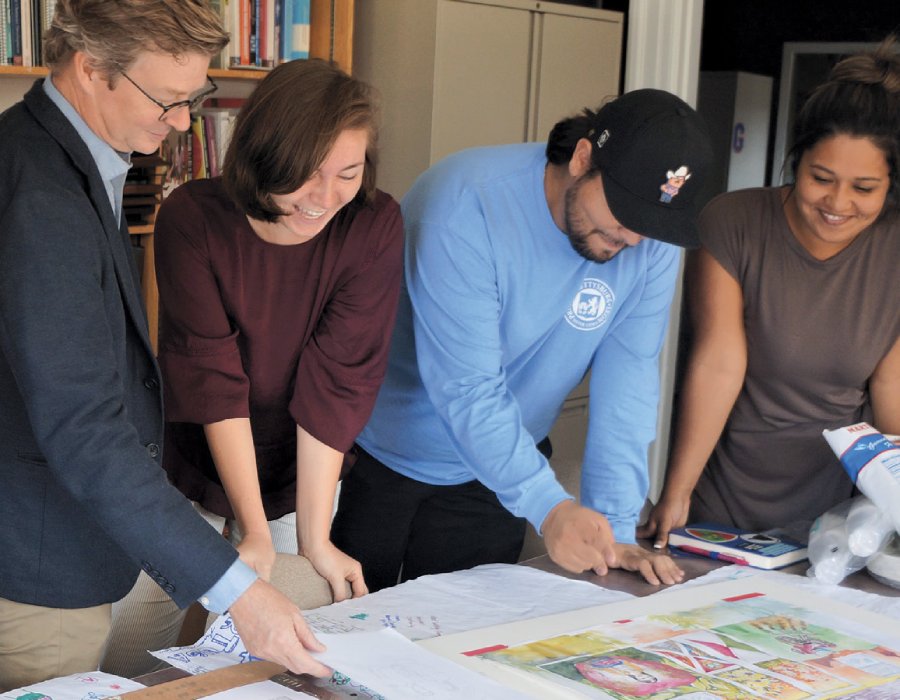
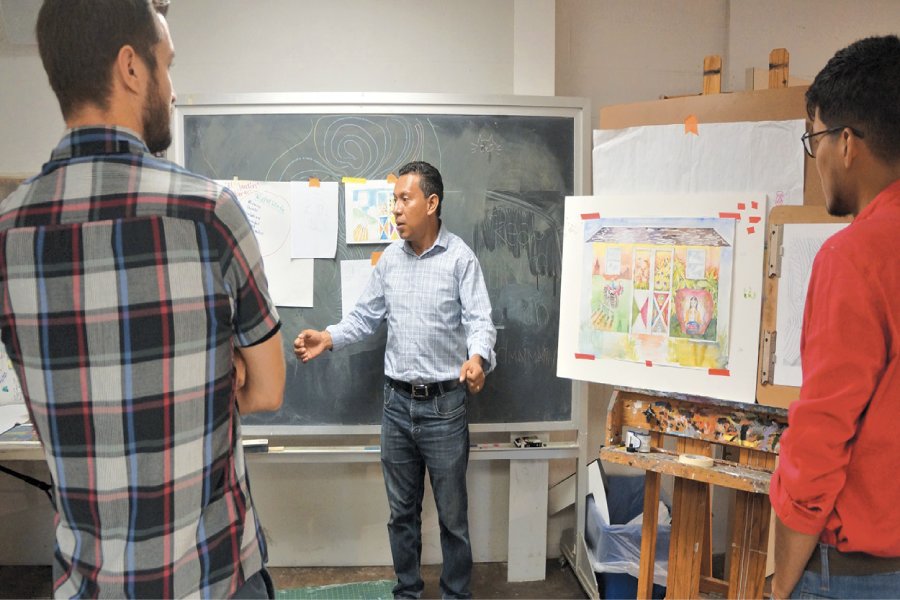
“Murals convey stories to a public audience,” Rioux said. “Immigrants in this country often have their stories told for them by others. This project is powerful because it allowed families who are integral to our community to tell their own stories.”
Stiegemeier hopes that connecting with Moreno and Muñoz encouraged his students to reflect on the privilege they have to study art, as well as exposing them to impactful artistic careers.
“Art is consequential to our society,” Stiegemeier said. “There is a swing in education to focus on what is considered a practical degree, but it’s important to show students that art can provide many different pathways to a viable career, too. Once they find their niche and figure out how they want to operate, they can have a viable career, impact people’s lives, and inspire communities.”
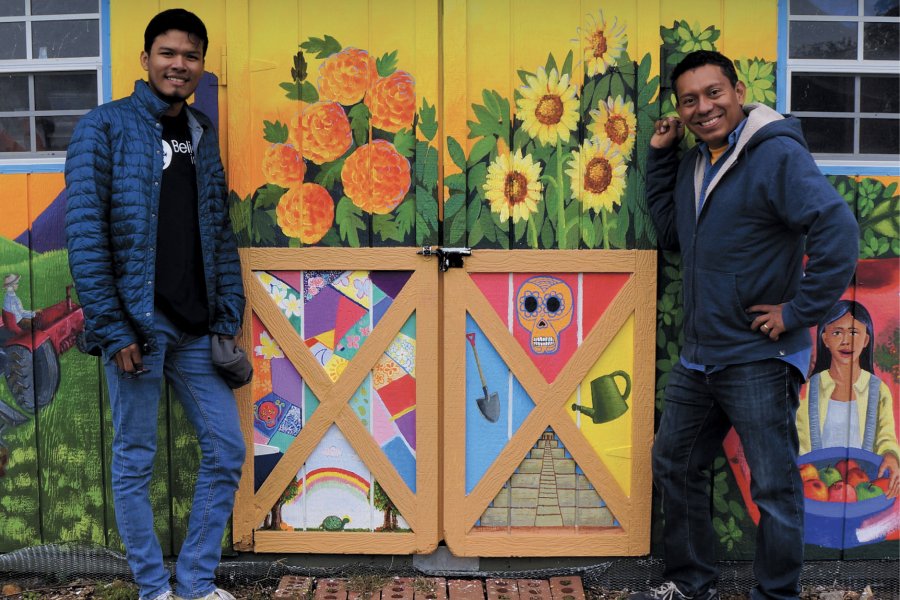
For the artists and PGL, this public mural represents something much greater than the artwork itself. It can serve as a stepping stone to show the significance of public artwork and spark a renaissance in Gettysburg—one that transforms its downtown with murals that tell the story beyond the battlefield, showcasing the thriving and multicultural space it is today.
“We want to make this part of the future of Gettysburg,” said Greg Bowles, PGL’s in-country director. “The whole reason for PGL to exist is the chance to share culture and experience of life between two very different places. One way we can do that is through public art.”
“Our hope,” Moreno added, “is to open those doors wider to show a different perspective of the story of Gettysburg and the values it holds to the people who live there and the tourists who visit every year.”
By Kasey Varner ’14
Photography by Greg Bowles
Posted: 02/20/23